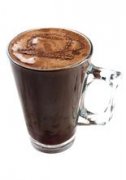A brief introduction to the Origin, Development, History and Culture of Fine Coffee beans in Santa Rita Manor, Colombia

In order to better promote Colombian coffee, the Colombian Coffee Growers Association (FNC) launched a live-action version based on this image-Juan? Waldez.
Now the uncle is the third-generation real-life version. Juan on behalf of Colombian coffee farmers? Uncle Valdez, as the ambassador of Colombian Coffee, will travel around the world to promote Colombian Coffee. A beard, a straw hat and the mules around him are his necessary wardrobe. Uncle Dou was still happy to see him at the 2010 Shanghai World Expo.
In his letter from Jamaica in 1815, Bolivar envisioned that when South America was liberated from Spanish colonial rule, New Granada and Venezuela should form a country, named Colombia. In August 1819, Bolivar's Patriotic Army defeated the Spanish colonial army at the Battle of Boyaca and liberated Bogota. As a result, New Granada and most of Venezuela have been liberated. With the consent of the patriotic army and people of New Granada, Bolivar proposed in the Venezuelan Congress held in Angostura in December of the same year that Venezuela and New Granada unite to form a unified country. On December 17, Congress passed a resolution formally establishing the Republic of Colombia, which unites the two regions. In May 1821, the State of Colombia held a Constituent Assembly in Kukuta, the interim capital, which adopted and promulgated the first Constitution of Colombia on August 20. The Constitution provides for a centralized republic and a series of decrees declaring the abolition of slavery, the liberation of slaves and their children, the prohibition of slave trade, and the equal rights of citizens, with freedom of speech and the press. The meeting elected Bolivar as the first President of the Republic and Santander as Vice President. In May 1822, General Bolivar Sucre led the army to liberate Quito, and Ecuador announced to join the Republic of Colombia.
In 1823, at the request of the Peruvian Patriots and with the approval of Congress, Bolivar led Colombian troops into Peru to fight against the Spanish colonial army.
In 1824, the Colombian and Peruvian coalition forces defeated the Spanish colonial army, and Peru gained independence. During the war with Bolivar's army in Peru, Santander took over as president and presided over the affairs of Colombia. Santander advocated the establishment of a federal regime and United local forces against Bolivar's political proposition of unity and unity. Factional struggles within the Colombian Congress and government have become increasingly acute.
In April 1826, the local rulers of Venezuela, headed by Pais, and those who opposed the new Granada, headed by Santander, demanded the establishment of a separate state. Through the mediation of Bolivar, separatist activities have been temporarily stopped, but internal contradictions and factional struggles still exist.
The main varieties of Colombian coffee are small grains of coffee. Plants are small trees or large shrubs, 5-8 m tall, usually much branched at base; old branches gray-white, nodes dilated, young branches glabrous, compressed. Leaves thinly leathery, ovate-lanceolate or lanceolate, 6-14 cm long and 3.5-5 cm wide, apex long acuminate, acuminate part 10-15 mm long, base cuneate or slightly obtuse, rarely rounded, entire or shallowly wavy, both surfaces glabrous, lower vein axils with or without small pores; midrib raised on both surfaces of leaf, 7-13 on each side of lateral veins; petiole 8-15 mm long Stipules broadly triangular, arising from the tip of the upper part of the young branch conical or awn tip, the tip of the old branch is often protruding tip, 3-6 mm long. Cymes several clustered in leaf axils, each with 2-5 flowers, without a total pedicel or with a very short peduncle; flowers fragrant, with pedicels 0.5-1 mm long; bracts base ±connate, dimorphic, 2 broadly triangular, nearly equal in length and width, the other 2 lanceolate, 2 times as long as wide, leaf-shaped; calyx tubular, 2.5-3 mm long, calyx eaves truncate or 5-denticulate. Corolla white, length varies from breed to breed, generally 10-18 mm long, apically often 5-lobed, rarely 4-or 6-lobed, lobes often longer than Corolla tube, tip often obtuse; anthers protruding from Corolla tube, 6-8 mm long; style 12-14 mm long, stigma 2-lobed, 3-4 mm long. Berries broadly elliptic, red, 12-16 mm long, 10-12 mm in diameter, exocarp dura, mesocarp fleshy, sweet at maturity; seeds raised abaxially, ventral flat, longitudinally grooved, 8-10 mm long and 5-7 mm in diam. The florescence is from March to April. [2]
Planting environment editing
The suitable climate in Colombia provides a real "natural pasture" for coffee. Coffee trees in Colombia are mainly cultivated in the Andes, on steep slopes about 1300 meters above sea level, where the annual temperature is about 18 degrees Celsius, annual rainfall is 2000 to 3000 millimeters, latitude 1 °- 11 °15 north, longitude 72 °- 78 °west, the specific range of elevation is more than 2.000 meters. A special combination of factors, latitude, altitude, soil, plant origin of species and varieties of coffee production in Colombia's coffee growing area, rain patterns produced by the climate of the coffee growing area and tropical convergence, changing topography, luminosity, favorable temperature range throughout the year, moderation and Rain Water's distribution And include some common cultural practice areas in the process of selective logging and transformation, including washing and drying. Very suitable for the growth of coffee, mild climate, humid air, and can be harvested regardless of season. This is why Colombian coffee is of high quality. Colombia has three Codiera mountains running north and south, right into the Andes. Coffee is grown along the highlands of these mountains. The mountain steps provide a diverse climate, where the whole year is the harvest season, and different kinds of coffee ripen at different times. And fortunately, unlike Brazil, Colombia doesn't have to worry about frost. About 2.7 billion coffee trees have been documented in Colombia, 66 per cent of which are planted in modern plantations and the rest on small traditional farms.
After the news of Napoleon I's invasion of Spain in 1808 spread to Colombia, the people of that place immediately launched an independence movement. On July 20, 1810, a large-scale uprising against Spanish colonial rule broke out in Bogota and the Governor of New Granada was arrested. In November 1811, representatives from all over the world organized Congress in Bogota, established the New Granada Joint Provincial Government, and declared independence on November 11. But Kundinamaka did not recognize the federation. At the end of 1812, the debate over the formation of a regime eventually led to civil war. It broke out again in 1814. In mid-1815, a large Spanish expedition arrived in New Grenada. Overthrew the United provincial government. In May 16, royalists took control of the whole of New Grenada. Spanish colonists made a comeback in 1815. On August 7, 1819, S. Bolivar led the insurgents to defeat the Spanish colonial army at the Battle of Boyaca and conquered Bogota on the 10th, ending Spanish colonial rule.
In his letter from Jamaica in 1815, Bolivar envisioned that when South America was liberated from Spanish colonial rule, New Granada and Venezuela should form a country, named Colombia. In August 1819, Bolivar's Patriotic Army defeated the Spanish colonial army at the Battle of Boyaca and liberated Bogota. As a result, New Granada and most of Venezuela have been liberated. With the consent of the patriotic army and people of New Granada, Bolivar proposed in the Venezuelan Congress held in Angostura in December of the same year that Venezuela and New Granada unite to form a unified country. On December 17, Congress passed a resolution formally establishing the Republic of Colombia, which unites the two regions. In May 1821, the State of Colombia held a Constituent Assembly in Kukuta, the interim capital, which adopted and promulgated the first Constitution of Colombia on August 20. The Constitution provides for a centralized republic and a series of decrees declaring the abolition of slavery, the liberation of slaves and their children, the prohibition of slave trade, and the equal rights of citizens, with freedom of speech and the press. The meeting elected Bolivar as the first President of the Republic and Santander as Vice President. In May 1822, General Bolivar Sucre led the army to liberate Quito, and then Ecuador announced that the first part of the Republic of Colombia was a background triangle, which symbolized the Andes. At the same time, it also implies that most of the Arabica coffee growing areas in Colombian coffee belong to high-altitude mountains. It is well known that the main coffee producing areas in Colombia are located in three mountains arranged with the word "Sichuan", all of which are part of the Andes. According to the geographical environment and climate, the characteristics and flavor of coffee in different regions are the same.
The second part is the mule. Please note that it is not a donkey! In Colombia coffee farmers actually use mules to carry coffee from the mountains. Because the mountain road in the coffee growing area of Colombia is very rugged, coffee farmers mostly use mules as a means of transportation. because of such unique geographical conditions, even with the development of transportation and science and technology today, it is impossible to transport coffee and raw beans from more than 1000 meters above sea level. and rugged mountain roads to transport coffee beans, so the way of carrying mules continues to this day.
The third part is the man in the straw hat. This man has a name. His name is Juan. Waldez. People used to call him "Juan?" Uncle JUAN VALDEZ ". Juan? Valdez is the representative image of Colombian coffee growers and a symbol of Colombian coffee, which distinguishes it from coffee from other countries of origin and is accepted by different markets. In the last 40 years, Colombian coffee growers have made great efforts to create what we now see as "Juan?" "JUAN VALDEZ" brand. In 2005, the New York Times confirmed the importance of this brand in the United States, because its trademark recognition has exceeded many of the world's leading brands and gradually become a world-famous brand.
Important Notice :
前街咖啡 FrontStreet Coffee has moved to new addredd:
FrontStreet Coffee Address: 315,Donghua East Road,GuangZhou
Tel:020 38364473
- Prev

A brief introduction to the flavor, taste and aroma characteristics of Colombian boutique coffee beans with endless aftertaste
The history of coffee cultivation in Colombia can be traced back to the Spanish colonial era in the 16th century, and there are many theories about the history of coffee in Colombia: one: it is said to come from the island of Haiti in the Caribbean and from El Salvador in Central America. Second: in 1808, a priest introduced coffee beans to Colombia for the first time from the French Antilles via Venezuela. One of them
- Next

Full-bodied aftertaste of Colombia Santa Rita Manor boutique coffee bean varieties planting market price
Colombian coffee is one of the few original coffee sold in the world under the name of the country. In terms of quality, it has won praise unmatched by other coffee, no matter in terms of yield or texture, Colombian coffee is first produced by Medellin, which is characterized by full particles, rich nutrition, moderate acidity, good balance and rich aroma. Soft and smooth taste. Except for Medellin.
Related
- Does Rose Summer choose Blue, Green or Red? Detailed explanation of Rose Summer Coffee plots and Classification in Panamanian Jade Manor
- What is the difference between the origin, producing area, processing plant, cooperative and manor of coffee beans?
- How fine does the espresso powder fit? how to grind the espresso?
- Sca coffee roasting degree color card coffee roasting degree 8 roasting color values what do you mean?
- The practice of lattes: how to make lattes at home
- Introduction to Indonesian Fine Coffee beans-- Java Coffee producing area of Indonesian Arabica Coffee
- How much will the flavor of light and medium roasted rose summer be expressed? What baking level is rose summer suitable for?
- Introduction to the characteristics of washing, sun-drying or wet-planing coffee commonly used in Mantenin, Indonesia
- Price characteristics of Arabica Coffee Bean Starbucks introduction to Manning Coffee Bean Taste producing area Variety Manor
- What is the authentic Yega flavor? What are the flavor characteristics of the really excellent Yejasuffi coffee beans?

